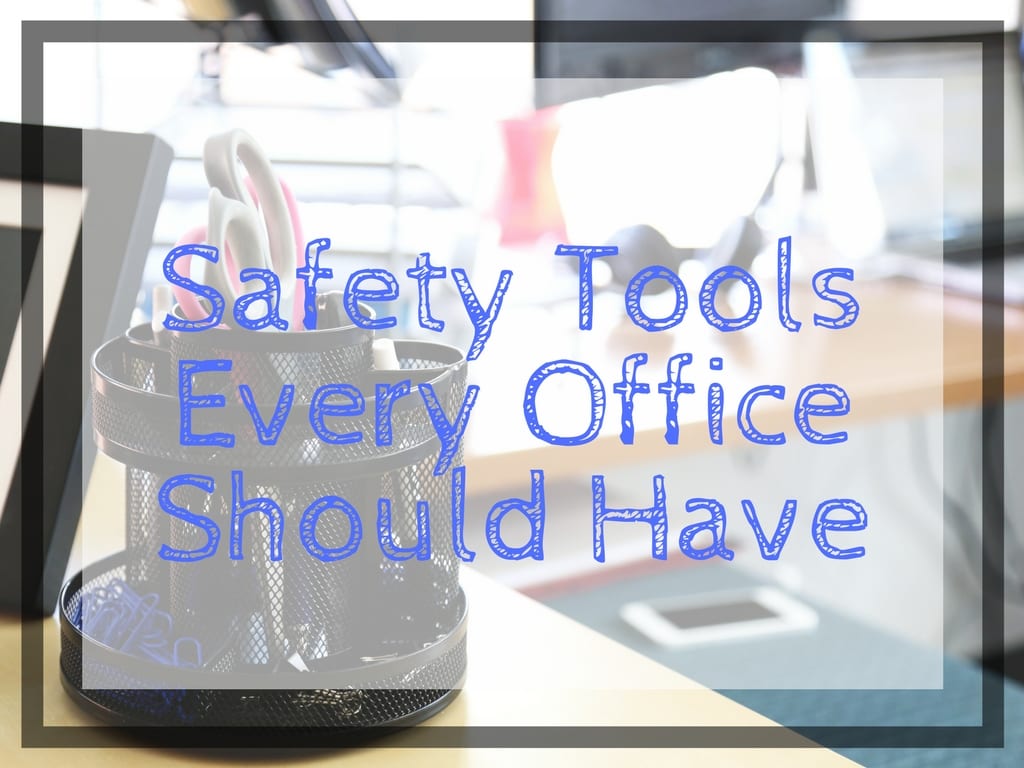Accidents can happen in any office, at any time. In fact, a recent U.S. Bureau of Labor Statistics Survey of Occupational Illnesses and Injuries revealed approximately 3 million non-fatal injuries and illnesses affected private industry workers and 722,000 impacted state and local government workers in 2014. Now, just imagine how much lower these figures might have been if the optimal safety measures were in place to protect workers.
Ultimately, there are many quick, easy ways to improve office safety, and these include:
- Keep your workstation clean. Let’s face it – no one wants to deal with a messy workspace. Fortunately, if office staff members keep their workstations neat and tidy, these workers can reduce the risk of workplace clutter that otherwise might lead to trips, falls and other on-the-job accidents.
- Be proactive about office safety. If an office chair breaks or a stairwell light goes out, employees should not hesitate to inform their employers. Meanwhile, employers should act immediately to respond to workers’ on-the-job safety concerns.
- Offer comprehensive training. Education plays a key role in office safety. If employers develop effective office safety training programs and update their programs regularly, these employers can teach workers how to identify and address on-the-job dangers faster than ever before.
- Host monthly meetings. Give workers the opportunity to express their on-the-job safety concerns by hosting monthly meetings. These gatherings also enable employers to share their progress as they work to create safe, effective work environments designed to help workers become more productive.
- Strive for constant improvement. An office should strive for zero workplace accidents every day. Additionally, an office that sets the bar high may be able to discover innovative ways to bolster office safety.
Let’s not forget about the essential safety tools for all offices, either. These safety tools include:
- Back Braces: There is no need to put an employee’s health and safety in danger when he or she lifts heavy items. Instead, keep back braces on hand to help workers lift heavy items with ease.
- Ergonomic Supplies: A standard office chair or desk may be insufficient, as either of these items may cause employees to suffer carpal tunnel and back and neck pain over time. By using ergonomic supplies, an employer can help workers remain comfortable as they perform day-to-day tasks, along with minimize the risk of long-term injuries.
- Fire Alarm: If a fire takes place in an office, how will workers know about it? If a fire alarm is in place, workers can receive an instant notification at the first sign of a fire. Also, a fire alarm should be monitored to ensure it is always working properly.
- Fire Extinguisher: If a fire occurs, employees must act quickly to minimize its damage. With a fire extinguisher in place, employees can work fast to diffuse a fire. An employer should keep all fire extinguishers in spots that are easy to find and ensure all employees can locate these extinguishers.
- First Aid Kit: A first aid kit should include bandages, cold packs, disinfectants and other first aid items. That way, if an on-the-job accident occurs, employees can provide immediate assistance until advanced medical personnel arrive on scene.
- Flashlights: If a power outage occurs, it is important for employees to find one another, even in the dark. Thus, flashlights are must-have office safety supplies. Employers also should have plenty of batteries on hand to ensure these flashlights will remain operational in blackouts and other emergencies.
- Gloves: Hand protection is critical, particularly if employees are tasked with cleaning up a workspace mess that involves bodily fluids.
- Ladders: Employees should never struggle to reach the top of a bookshelf or filing cabinet. Luckily, ladders and stepstools are available to guarantee employees can stay safe when they reach for the top shelf. When using a ladder or stepstool, an employee who climbs the rungs should work with a colleague who remains at the bottom of the ladder or stepstool as well.
- Mirrors: Believe it or not, office spaces often have blind corners. If an employee is not careful going around a corner, collisions are certainly possible. Therefore, employers should install mirrors on walls or ceilings in hallways and other high-traffic areas to reduce the risk of employee collisions.
- Warning Signs: A wet bathroom or tiled area can be dangerous, and even a single misstep can lead to long-lasting harm. Thankfully, warning signs are easy to set up and can be used to help workers identify trip and fall hazards.
A safe work environment should be the goal of all offices. Furthermore, the benefits of creating a safe workspace may stretch across all levels of a business, and these benefits include:
- Reduced Costs Related to Workplace Injuries: A workplace injury may put an employee out of commission for an extended period of time. Moreover, an office likely will need to temporarily replace this employee, as well as cover the worker’s salary his or her absence. But a proactive approach to office safety helps reduce workplace injuries and their associated costs.
- Increased Workplace Loyalty: Safe workers are more likely than others to give their all in everything they do. As such, these employees may become loyal to a business and do whatever they can to help a company achieve its goals.
- Improved Workplace Results: It is easier to stay focused on everyday tasks in a safe work environment than in a cluttered workspace. As a result, an employer that prioritizes workplace safety can help workers maximize their potential.
Workplace safety can have far-flung effects on office staff, regardless of a company’s size, stature or industry. Employers that want to go the extra mile to enhance on-the-job safety can provide workers with cardiopulmonary resuscitation (CPR) training too.
CPR training teaches office workers how to become life-savers. This training emphasizes adult, child and infant CPR, how to use an automated external defibrillator (AED), how to assist conscious and unconscious choking victims and other emergency topics. Plus, within just a few hours, any employee can become CPR-certified.
SureFire CPR is a leading provider of CPR training across Southern California. We employ medical professionals to teach people how to administer CPR techniques and become life-savers in their respective communities.
To learn more about our CPR classes, please contact us at (888) 277-3143.










